Brahmatal Trek 2025 | Package, Best Time, Weather & All
Region: Uttarakhand
Base Camp: Lohajung
Duration: 6 Days
Altitude: 12,250 ft
Grade: Easy
Distance: 24 km
Brahmatal Trek Description
Brahmatal is an high altitude alpine lake situated in the Chamoli district of Uttrakhand at an altitude of 10,190 feet, while the summit of the trek, “Brahmatal Top” is situated at an elevation of around 12,250 feet. The trek takes about 5-6 days to complete including the drive from Dehradun or Rishikesh. Brahmatal Trek provide you a beautiful winter experience with a clearer view of Mt Trisul. Being one of the best winter treks in Uttarakhand, it is perfectly suitable for beginners and experience alike. The trek is famously known for its beautiful snowfields, frozen lakes, and the enchanting views of the Himalayan peaks from its summit top. It provides you a beautiful experience to explore the famous mountain peaks of Uttarakhand Himalayas including Mt Trishul (7120m), Nanda Ghunti (6,309 m), Chaukhamba (7,138 m), and many more.
Also, one can have a unique experience of two beautiful glacial lakes, Bekaltal and Brahmatal with their religious significance related to lord Brahma (Creator God). This is a perfect opportunity for camping experience beside the lakes, typically, campsites locations are little bit away at a certain distance from the water bodies.
Along with its high altitude lakes, and the prominent views of the Mountains, the trekking route has many meadow sections, that turn into a winter wonderland, when a white carpet of snow covers the entire landscapes surrounding the trail. It’s really an unforgettable journey into the heart of the Himalayas that takes one through beautiful forests of oak, cedar, and rhododendron, vast meadows, clearer view of Mt. Trishul, and witnessing valleys, with famous trekking spots such as the ‘Ali Bedni Bugyal’ and the mysterious lake of ‘Roopkund.’
To do this trek, one has to start from a small village called Lohajung and head towards the Bhenkal Tal, passing through dense forest that transitions to another lake and opens into vast meadows, reaching the high points of Jhandi Top. The name ‘Lohajung’ is connected to a mythological story of the goddess Parvati. However, you are in Devbhoomi Uttarakhand (the Land of Gods), where it is common to find many destinations linked to mythological stories.
Brahmatal Trekking Itinerary
Drive Distance: 245 km
Drive Time: 9-10 hours
Altitude: 7,600 ft
Our journey will begin from the Yoga Capital of the world – Rishikesh; pickup is included in our Brahmatal package. Reach Natraj Square in the early morning so that we can cover the distance and have ample time for you to rest and recharge for the trek on day 2.
The drive would be filled with the beautiful scenery of mountains, hills, colorful homes and meandering roads. On our way, we will cross 3 Prayags, which means the confluence of 2 rivers. First, we will encounter Devprayag, the last Prayag, where river Alaknanda meets river Bhagirathi to form the holy river Ganga. Then, we cross Rudraprayag, where Alaknanda joins the Mandakini River. The last prayag we encounter is Karnaprayag, where Alaknanda meets Pindarganga.
At Devprayag, you can clearly see Alaknanda’s greenish-blue water and Bhagirathi’s brownish water mixing; it is a site to behold.
We will reach Lohajung by evening, and after that, you’ll be free to explore the surroundings.
After a delicious dinner, we will rest for the night and charge up for the trek the next day.

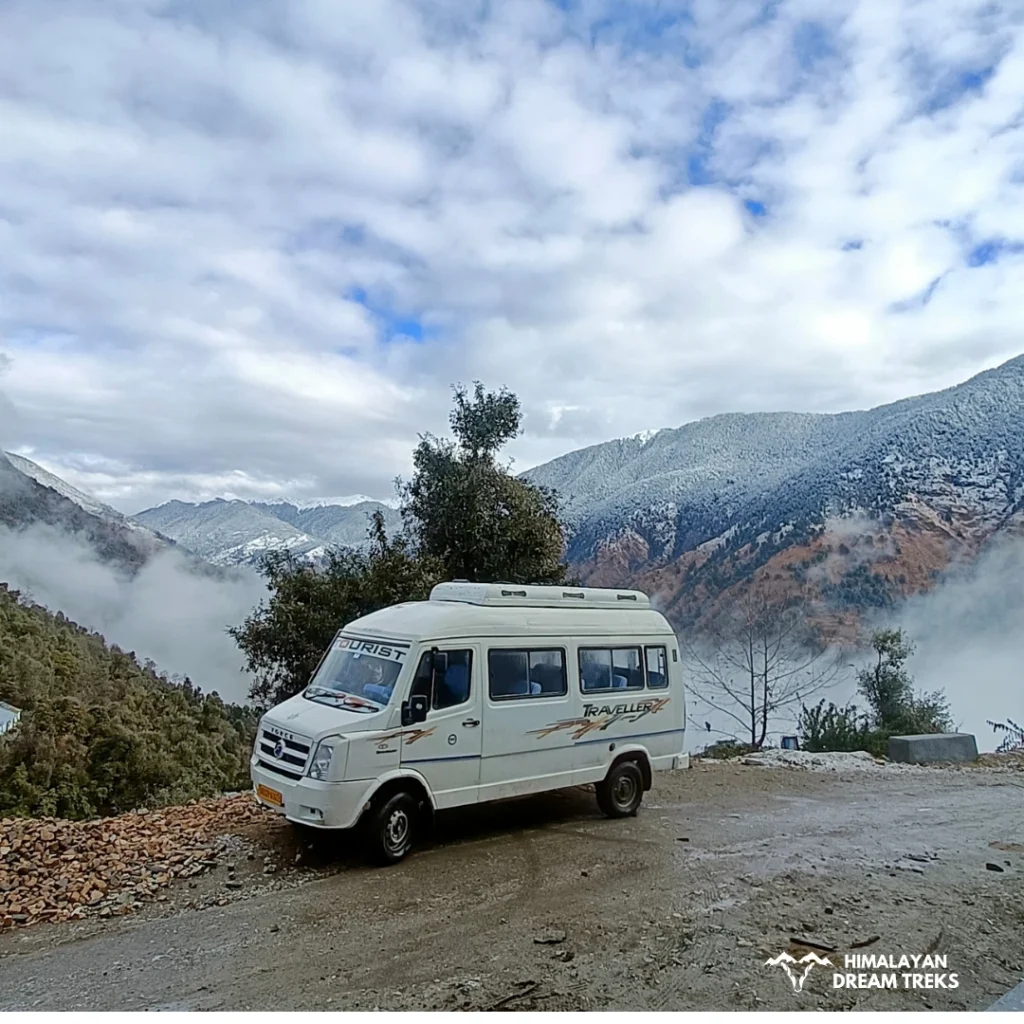
Trek Distance: 6 km
Trek Time: 4-5 hours
Altitude: 9,875 ft
Today marks the beginning of our trek; after an energy-packed breakfast, we will start walking going through the hustle of the Lohajung Market area towards Bekaltal.
As we walk deeper, the terrain will change into a rocky and slightly steep climb, testing your fitness level. After a short distance, you will come across Mandoli village on your left side.
After walking for 1.5 – 2 km, you can spot Gwaldam Ranges, on your right, which is situated in Gwaldam village, between the Kumaon and Garhwal regions of the state.
Further in the trek, you will find tatches and small water streams made up of Kali and Pindari rivers, and later, you can spot Kali Valley, the confluence of these two rivers as well. After a while, you will reach Khop Tal or Khopariya Tal, a small seasonal lake; after a quick rest, proceed again, as Bekal Tal is not far away.
After a short walk, you will reach Bekal Tal, our first campsite. This is a beautiful, entire lake dedicated to Nag Devta; you can also spot a stone-arranged temple of Nag Devta near the lake.
We will spend the night here under sparkling stars beside this peaceful lake.
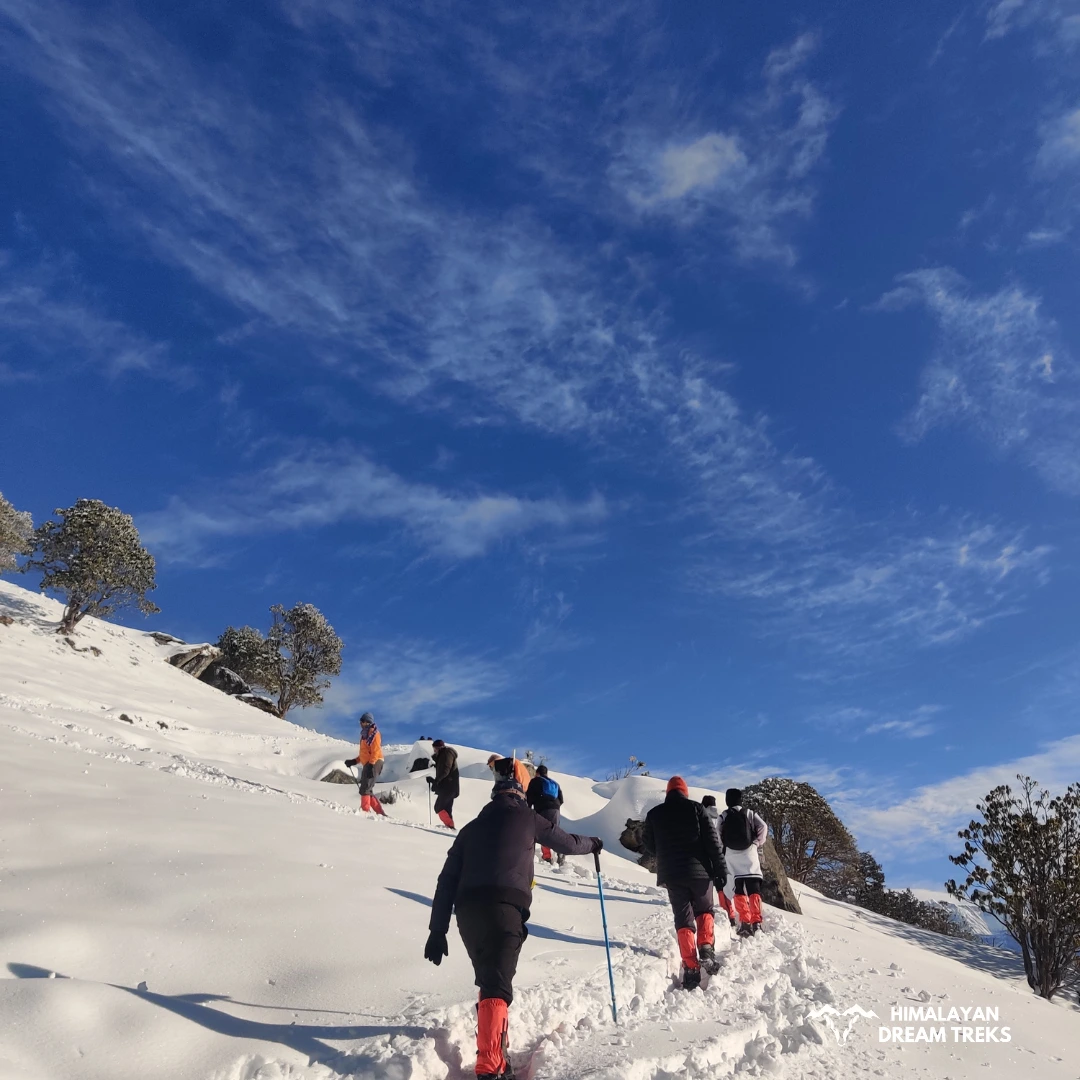

Trek Distance: 8 km
Trek Time: 7-8 hours
Altitude: 11,150 ft
Be ready for a day filled with long hours of hike to reach the Brahmatal, the 2nd most anticipated part of the trek, 1st being the summit of Brahmatal.
After a steep hike of 1 km, you will reach Telandi Top; the area resembles a bugyal, plain grassland type. From this vantage point, you can spot Trishul I & II on your left and peaks like Devtholi Mrigthuni on the right.
After walking 7 kilometres, with short breaks in between, we will reach Jhandi Top, our highest ridge point. Jhandi Top is known as it because you will find a Mahadev Temple here with a huge Trishul here (Trident-like) with, a tied Damroo (Power Drum), and many flags.
From this point, many peaks that were far away now look closer, like Nanda Ghunti, Bethartoli, Trishul (I & II), Mrigthuni, Devtoli, and Maiktoli.
Brahmatal is situated after a short descent of 1.5 km from Jhandi Top at an elevation of 10,190 ft. Be more cautious, as the trail down is filled with rocks. The long hours will feel all worth it once you reach Brahmatal; the beauty and serenity will leave you in awe.
No wonder it is believed that Lord Brahma, the creator, chose to meditate on this site for a while as it provides the perfect place for it.
Reflect back on life, rejuvenate beside the lake, and rest for the night after a well-deserving hot dinner.


Time: 4 hours
Altitude: 12,500 ft
Trek Distance: 6 km
Today, we will cover the most anticipated trek part, the Summit Top. Though the climb is technical, it is steep, and during winter, snow takes the difficulty a level up.
The way to the summit is through ridge walking via two ridges, though it is not a narrow walk.
The first ridge will be inclined as we go upwards, and the second one open up to an open space at the top. From the top, you can spot all the peaks mentioned before, like Mt. Nanda Ghunti and Trishul, but a closer look just hits differently. The summit provides you with perfect and closer views of the Himalayan ranges.
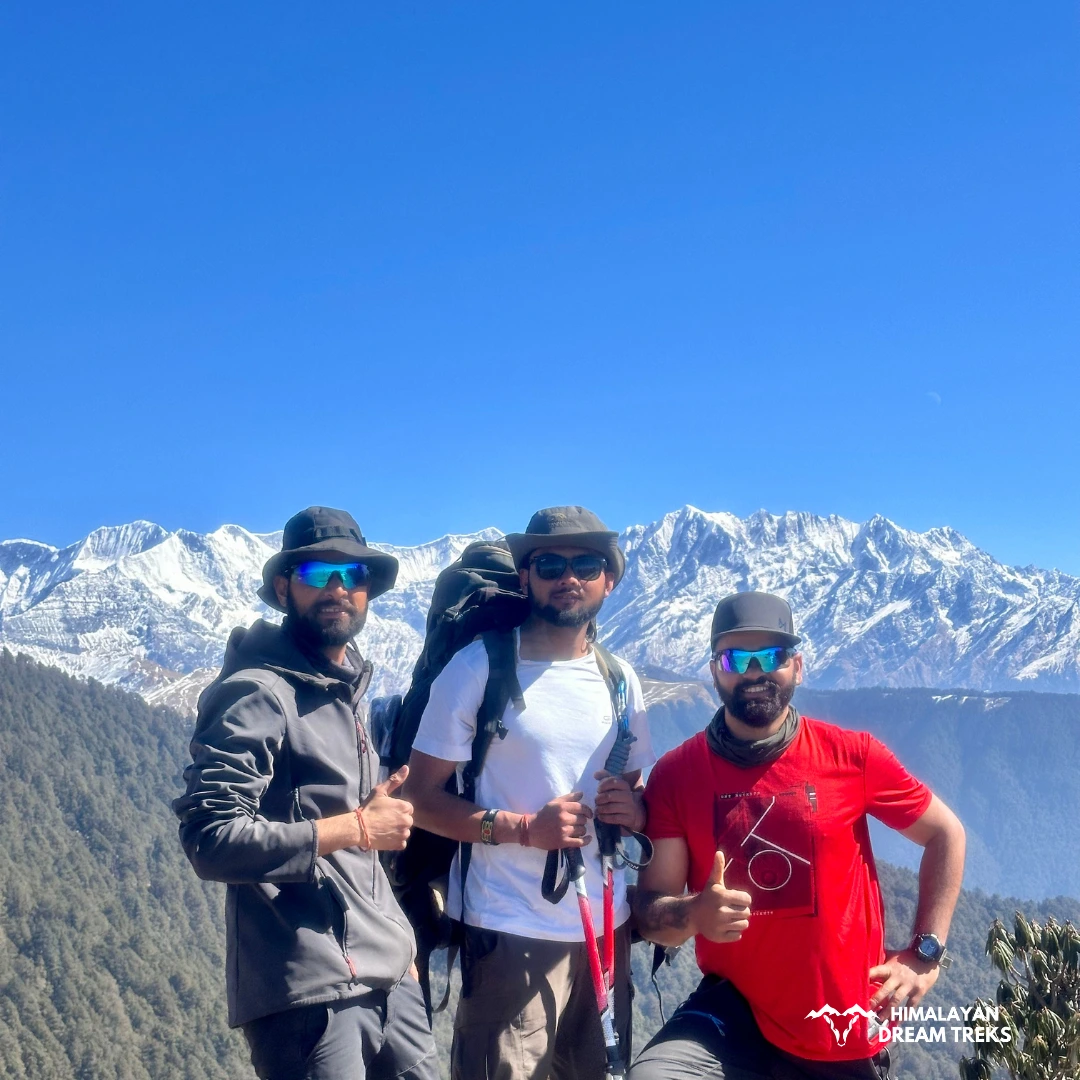
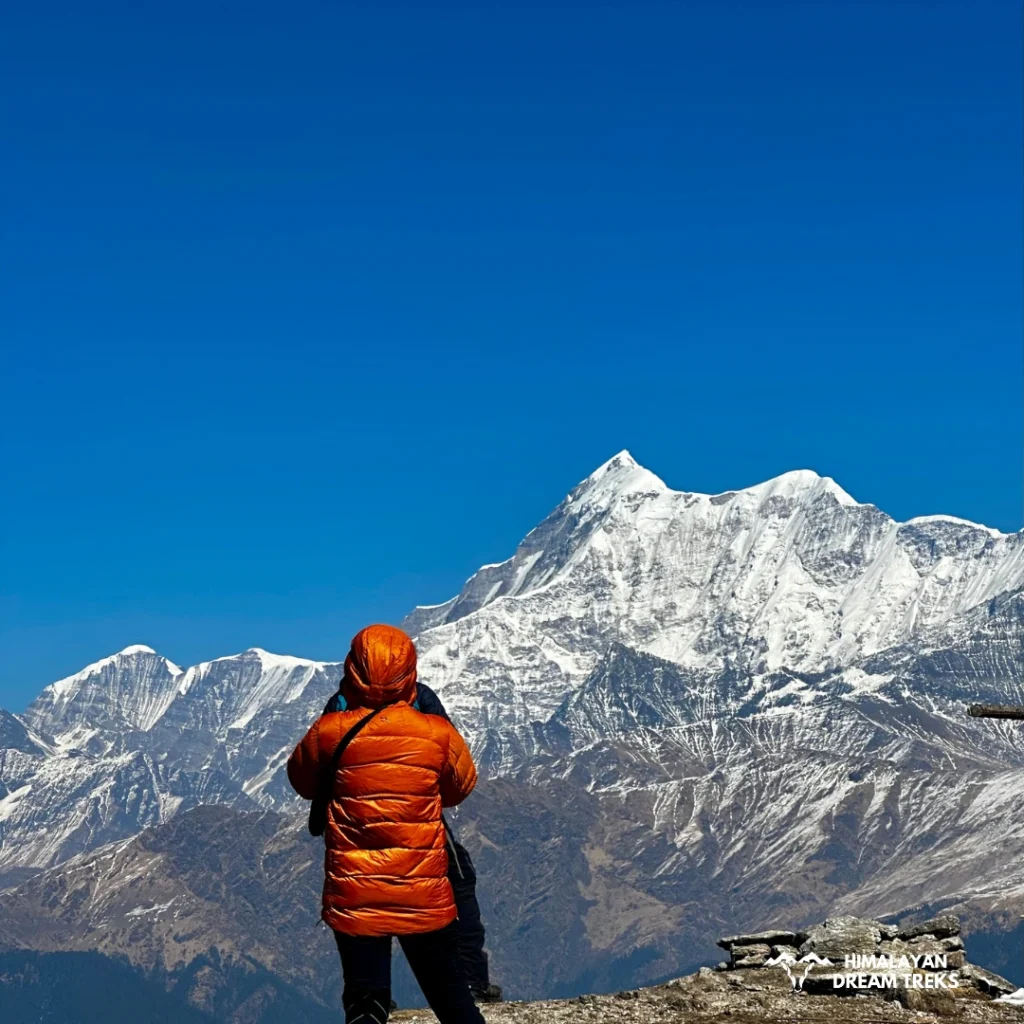
Time: 7-8 hours
Trek Distance: 11 km
Today marks our trek’s last descent as we return to Lohajung. The trek distance is long, and we will cover it via the same route we came from.
After a healthy breakfast, we start our descent early in the morning so that we can reach
Lohajung in the evening. Don’t miss out on the beautiful sunset, reflecting the orangish glow of the Himalayas.
Sign off after a hot dinner and a stroll through the town.
Time: 8-10 hours
Drive Distance: 254 km
Today marks our trek’s last descent as we return to Lohajung. The trek distance is long, and we will cover it via the same route we came from.
After a healthy breakfast, we start our descent early in the morning so that we can reach
Lohajung in the evening. Don’t miss out on the beautiful sunset, reflecting the orangish glow of the Himalayas.
Sign off after a hot dinner and a stroll through the town.
Brahmatal Trek Package
Price Inclusion
- Stay: Accommodation is included for all days of the trek (from Lohajung to Lohajung). Tents will be provided on a double-sharing basis.
- Transport: Transportation from Rishikesh to Lohajung and back is covered.
- Meals: All meals are provided from dinner at Lohajung on Day 1 to Day 6. Meals are simple, nutritious, and vegetarian.
- Trek Equipment: All essential trek equipment is included, such as sleeping bags, kitchen and dining tents, utensils, mattresses, personal tents, toilet tents, and crampons (if needed).
- Forest Entry and Permits: All required fuel charges, tolls, forest entry fees, and permits are covered.
- Trek Staff: A qualified, professional team, including a mountaineering-certified trek leader, guide, cook, and support staff, will accompany you.
- Emergency Kit: First aid medical kits, oxygen cylinders, and stretchers are provided for safety.
Price Exclusion
- GST (5%): Mandatory and not included in the package cost.
- Emergency Evacuations: Any charges related to emergency evacuation are not included.
- Personal Expenses: Any meals or accommodations outside of the provided itinerary or additional services not listed in the inclusions.
- Personal Luggage Carrying: Charges for mules or porters to carry personal luggage are not included.
Check the booking procedure here, including details on booking deposits, payment terms, and the cancellation policy.
Complete Information of Brahmatal
In this section you can find each and every detail about this trek, whether you’re finding information or booking this trek, you can get valuable insights here.
Best known as the snow trek, the Brahmatal Trek is done in the winter season during December and March. It can be done in other seasons as well, read more in detail below.
Months – December to February
Temperature – Daytime: 5℃ to 6℃ | Night: 0℃ to minus 8℃
This trek is most known as the winter trek, as it is one of the few treks accessible in winter and allows you to climb the summit as well.
During winter, the trail covered in snow will give you the Narnia vibes with tall snow-dusted oak, pine, and rhododendron trees. Both the lakes, Bekal Tal and Brahma Tal, will be frozen, adding more to the beauty.
Winter is the perfect time to experience a snow trek without technical climbs, but it is challenging for your mental and physical endurance. Overall, the awe-inspiring trail and grand views of peaks like Mt. Nanda Ghunti and Trishul will make every step worth it.
Months – March & April
Temperature – Day: 10℃ to 15℃ | Night: 0℃ to minus 2℃
The greenery returns with melting snow as life stretches its arms after a long hibernation in winter. Spring brings a cascade of colors to the region; the blazing colors of rhododendrons create an umbrella of red and pink deep within the forest, but you can start spotting the colorful trees from Lohajung itself.
Spring is the optimum time for trekking if you want to witness the region’s flora without the harsh winter filled with snow and the blazing heat of summer.
Months – September to November
Temperature – Day: 10℃ to 15℃ | Night: 0℃ to minus 5℃
In autumn, the trees will be shedding their leave, and the trail will be of brown colour palette, filled with gold of Maple, brown of rhododendrons and almost black needle-like leaves of pine.
You won’t witness spring flowers but experience a different scenery in autumn with brown hues and the fragrance of Maple and oak in the air.
The mountain peaks will be more evident than in any other season, with no haze, rainy clouds or fog. Autumn is the perfect time to catch the most enchanting sunsets and sunrises in the soft yet bright shades of orange, pink and red.
Brahmatal Trek is categorized as an Easy to Moderate Himalayan trek, making it one of the best choices for beginners with decent fitness. It starts from Lohajung at around 7,550 feet and takes you to a high point of approximately 12,250 feet over four trekking days. The route is well-established, and the trail gradually climbs through dense forests, open bugyals (meadows), and ridge walks, eventually leading to the summit point with views of Mt. Trishul and Mt. Nanda Ghunti.
Compared to other beginner-friendly Himalayan treks like Kedarkantha and Kuari Pass, Brahmatal offers a relatively smoother gradient with better-distributed altitude gain. The overall climb is shorter than Kedarkantha, and the terrain is more predictable than Kuari Pass. While it has some steep sections, especially the initial day’s ascent and the summit ridge, the daily trekking distances are manageable, and the elevation profile allows for gradual acclimatization.
Quick Facts-
- Difficulty level: “Easy-Moderate” and beginner-friendly with good fitness.
- Altitude: Max altitude of 12,250 feet; steady gain spread over 4 trek days.
- Strenuous sections: Steep climb on Day 1 (~1,630 ft) and summit day (~1,755 ft); rest is gradual.
- Seasonal impact: Snow in winter makes it physically more demanding but not technically harder. Summer and autumn are easier on the body.
- Comparison: Brahmatal is easier than Kedarkantha in terms of total ascent and trail conditions. Kuari Pass has more mixed terrain and steeper sections.
- Acclimatization: Less risk of AMS due to gradual gain and steady exposure; hydration and pacing are key.
Terrain of Trekking Route-
- Forests & Meadows: Brahmatal begins on wide forest trails through rhododendron and oak woods. Bekaltal and Tilandi campsites lie in open Bugyal meadows (grasslands) that offer panoramic mountain views. At Tilandi the ridge opens up to reveal Mt. Trishul and Nanda Ghunti, and the campsite is known for strong winds.
- Ridge and Summit: From Tilandi (10,495 ft), the trail climbs a steep ridge to Jhandi Top (12,250 ft) over about 3.5 kilometers, gaining ~1,755 feet in altitude. After reaching the top, the trail descends gently to Brahmatal lake (~10,190 ft). In winter, the ridge and summit slopes are snow-covered and icy – the snow crust hardens overnight and becomes very steep toward the top. These snow sections are the trickiest part of the route. In summer, the final ascent is dry and rocky but not excessively technical.
- Tricky/Steep Sections: The steepest section is the initial ascent from Lohajung (7,550 ft) to Bekaltal (9,180 ft), which gains ~1,630 feet over 4.5 kilometers. The summit day climb from Tilandi to Jhandi Top adds another ~1,755 feet gain over ~3.5 kilometers, making it the second toughest section. Beginners should be ready for long, steady climbs rather than scrambling or exposed ledges. (By contrast, Kuari Pass has an exposed overhanging ledge to Gorson Bugyal, and Kedarkantha has a short steep snow-climb on summit day.) Otherwise Brahmatal’s trails are well-defined. In winter, hard frozen snow can force the use of crampons or microspikes on the final ascent.
- Trail Type: Expect undeveloped trekking paths (sometimes muddy or snowy, no paved sections). Camps are at clearings/lodges. Water is scarce above Tilandi (carry 2–3 L per day). In rain or snow, the forest trails can become slippery; short ladders and a rope are installed at one brook crossing on Day 4 in case of spring runoff. But overall, the route is straightforward without complex navigation.
Treks are all about fun, adventure, finding yourself, etc, but only for those who are mentally and physically fit. Because activities like treks, especially a Himalayan trek, challenge you on different levels in unimaginable ways and situations.
Brahmatall trek falls under easy to moderate level trek depending on your chosen time of the year. In summer, spring & autumn, you will find this trek easy. Known as one of the best winter treks in India, the snow takes the difficulty a level higher, making the preparation mentally and physically more important.
Being fit is like being equipped with the right weapons for a battle. With a fit body and strong mind, you can make the most out of your Brahmatal trek.
The trek difficulty dictates your level of fitness and preparations for it. As mentioned above, it can be an easy and easy to moderate level trek so prepare accordingly.
We take acclimatisation seriously and make sure that our trekkers get proper time to acclimatise and rest in between. This is neither a very long trek nor at a higher altitude, so we will only trek for a short number of kilometers every day, giving your body the time it needs.
In the beginning, the ascend from Lohajung to Bekaltal campsite can be challenging as it is going to be your first day and changing altitude. The good part is that the trail is easy to follow, and the terrain is manageable, even for kids. Facilitated with a proper workout regime you can really take note of the surrounding environment and not waste time in catching your breath.
For summer, spring, and autumn seasons, you can follow an easy-level fitness routine.
For Winter, you have to workout more because of the added difficult factors like cold climate, snow, and fog. The trails will have some snow in the beginning which will be hard in nature and hence slippery too. Moving forward, at the higher level the snow may reach your knee or waist level, and walking on powdery snow takes the test of your balancing skills, stamina level, endurance, and overall strength of your body.
- An easy level and weekend treks require a basic fitness level, where you should focus on building your stamina and strength. Start with walking/running and include a 45-minute to 1-hour workout (cardio + strength training).
- A level-up in a fitness routine is required for an easy to moderate level trek like start aiming to run 5 km in under 40 mins, and strength training is a must.
Mental preparation includes thorough research of the trek you want to do or decide to. Understand the terrain, difficulty level, and the ways to get fit for it, look up for sudden situations that may happen, and how to tackle them. Being prepared gives you an edge to keep calm & handle a difficult situation.
- Exercises to achieve the goal
Cardiovascular Training: Running, cycling, and swimming to boost stamina.
Strength Training: Focus on leg exercises like squats, lunges, and step-ups for endurance.
Core Strength: Planks, mountain climbers, and Russian twists to maintain balance on uneven trails.
Flexibility Exercises: Stretching, yoga, and dynamic warm-ups to prevent injuries.
Mental Conditioning: Visualisation techniques, breathing exercises, and meditation to strengthen focus and manage stress on difficult days.
Tip: For moderate to difficult-level treks, practise exercises with weights. Seek professional advice accordingly.
- Extra Tips related to the diet, muscle recovery, and healthy lifestyle routine.
Diet: Incorporate proteins like lentils, chicken, eggs, tofu, etc for fast recovery after a strenuous trek. Whole grains like wheat, quinoa, barley, etc for sustained energy, and leafy greens like spinach, bitter guard, and any seasonal veggie for those extra nutrients and building the immunity system.
Muscle Recovery: Plan rest days and add stretching, relaxing yoga poses or foam rolling after every workout.
Lifestyle Routine:
Limit alcohol and caffeine consumption.
Start sleeping upto 8 hours.
Stay hydrated – drink 2 to 3 liters of water. To incorporate more nutrients, including coconut water, fruit, and vegetable juices.
Altitude Sickness happens when your body cannot adjust to lower oxygen levels at higher altitudes. This happens mainly because your body didn’t have enough time to acclimatise to a higher altitude or not enough time to get used to lower oxygen levels.
How to Prevent –
- Gradual Ascent: Climb slowly to give your body time to adjust.
- Hydration: Drink plenty of water to prevent dehydration.
- Rest and Sleep: Ensure ample rest, especially as you reach higher camps.
- Avoid Alcohol: Limit alcohol and caffeine, which can lead to dehydration.
What to do –
- Most Important – Inform your trek leader as well-trained leaders and experience they can assess the situation better and find solutions faster.
What trek leader may suggest. Trekkers without agency should also know these instructions –
- Stop and Rest: Pause your trek to recover.
- Descend if Necessary: Descend immediately to Lohajung Basecamp, our team with the vehicle and necessary help will be there for further action.
- Stay Hydrated: Drink water and avoid strenuous activity.
- Seek Medical Help: After descending our team will take you to the nearest hospitals if needed. If solo, then descend and seek the closest medical help.
- Nearest Hospital Details –
- Govt Hospital Tharali
Address –
Contact Number –
- 45-60 Ltr Bag Pack With Rain Cover & Comfortable Straps
- Hot & Cold Water Bottle Like Borosil & Milton
- Energy Bar, Dry Fruits & ORS
- Personal Medical Kit
- 2/3 Full Sleeves (Non-Cotton)
- 1 Full Fleece T-Shirt
- 1 Fleece Jacket (Woollen Or Sweater)
- 1 Down Feather/Hollofil Jacket
- 1 Waterproof Jacket/Poncho
- 1 Pair Thermal Inners (Upper And Lower)
- 2 Trek Pants (Avoid Shorts & Denim Pants)
- 1 Pair of Waterproof Gloves
- 1 Pair of Woollen Gloves
- Sun Cap
- Woollen Cap
- 4 Pairs Of Cotton Socks
- 1 Pair Of Woollen Socks
- 1 Pairs Of Sunglasses (U/V Protected)
- 1 Neck Gaiters (Buff)
- Tiffin Box
- 1 Waterproof & High Ankle Trekking Shoes
- 1 Pair Of Floaters
- Hand Sanitizer & Sunscreen Lotion
- Toothbrush And Toothpaste
- Toilet Paper And Wet Wipes
- Quick Dry Towel
- Lip Balm & Antibacterial Powder
- Moisturizer
- Sleeping Bag
- Common Tent
- Mattress
- Dining Tent
- Kitchen Tent
- Camping Stool
- Walkie Talkie (For Team)
- Spikes and Gaitor (If required)
- Utensils
The nearest airport is Dehradun’s Jolly Grant Airport, which is just 15.8 km away from Rishikesh.
From here, you have two options.
Hire a private taxi or shared one if it is convenient for you to direct Rishikesh itself.
From the airport, the main city of Dehradun is 1.5 km away; walk till there or hail a shared auto/taxi.
You can book a direct train to Rishikesh railway station, which is named Yog Nagri Rishikesh Station, Rishikesh being the Yoga Capital of the world.
Option 2 is to book train tickets to Dehradun, which is 38.4 km away with 1-hour drive time.
Similarly, you can book tickets for Haridwar, which is 44 km away and has a 1-1.5 hour drive time.
Tip – Book for a train that reaches Rishikesh early in the morning on Day 0. It will give you time to acclimatise to the weather, and a short tour of the city can also be done.
Rishikesh is well connected to motorable roads, so you can directly drive here in your private vehicle.
Another option is to reach Delhi, the capital of the country. The city is well-connected with all parts of the country. From Delhi, you can book a bus ticket directly from the Kashmiri Gate bus stop or use online booking platforms like Redbus.
From Rishikesh take a bus to Karanprayag and from there change buses for Tharali. Tharali is connected to Loahjung and local taxis are available. Alternatively, you can also reach Lohajung via Haldwani. From Haldwani, take a bus to Tharali and from Tharali take a taxi to Lohajung.
The route is well plotted on the map below, showing the distance and elevation gain and loss along the trek.
MUNDOLI WEATHER
Read more info regarding Brahmatal below
It’s believed that Lord Brahma meditated at this spot hence the name Brahmatal.
And the story behind the name Lohajung is interesting folklore. Locals believe the Goddess Parvati fought with a demon named Lohasur and saved everyone by killing him, so the name Lohajung came into existence.
Flora
During the trek, you will come across a diverse range of trees and flowers, such as Cedar, Oak. Pink and White flower Rhododendrons, also known as “Buransh ke Phool”, welcome you when in bloom.
The magical properties of Thuner’s tea will vanish your cough & cold in minutes, other shrubs you will find here are shilajeet, katukki etc.
Fauna
If luck is in your favour, you may spot birds like the Himalayan Monal (State bird of Uttarakhand) and Himalayan Griffon Vulture.
- Ali Bedni Bugyal
- Roopkund Trek
- Kausani
Gallery
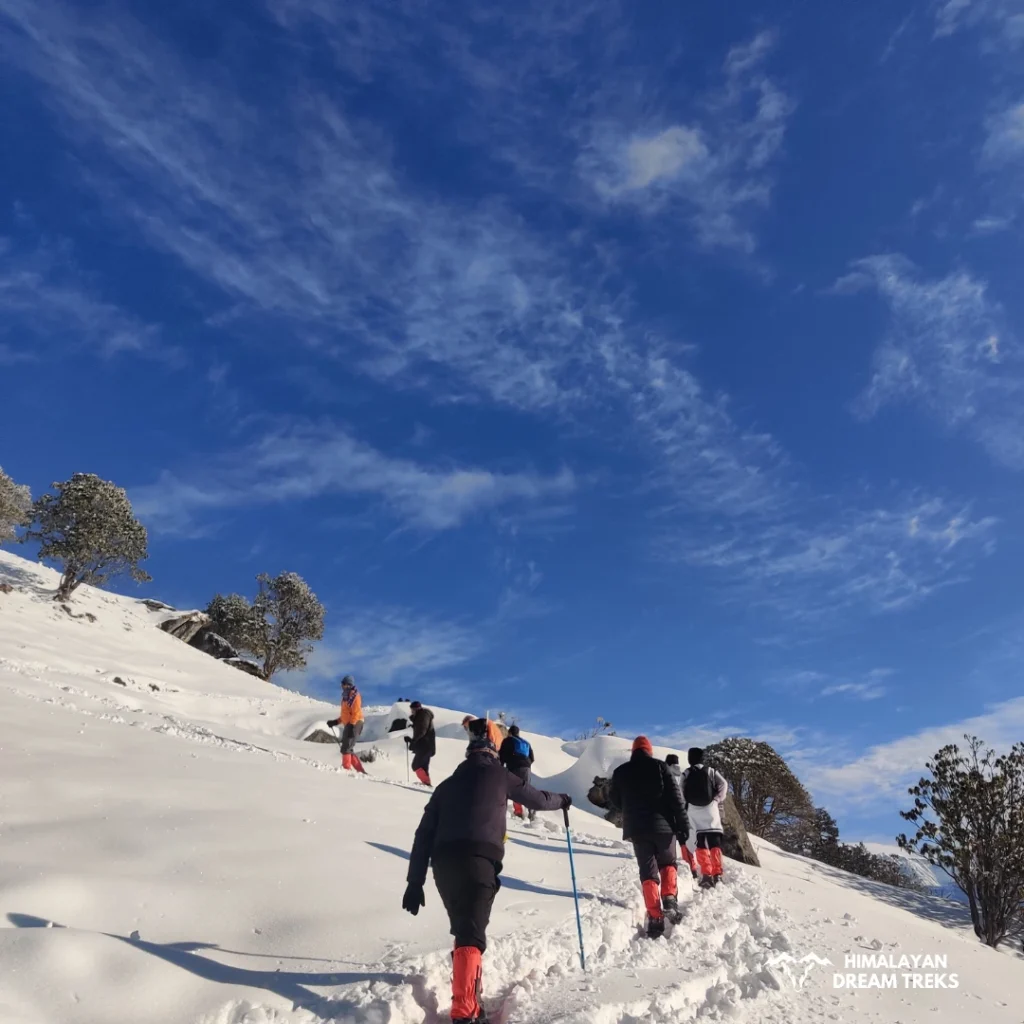

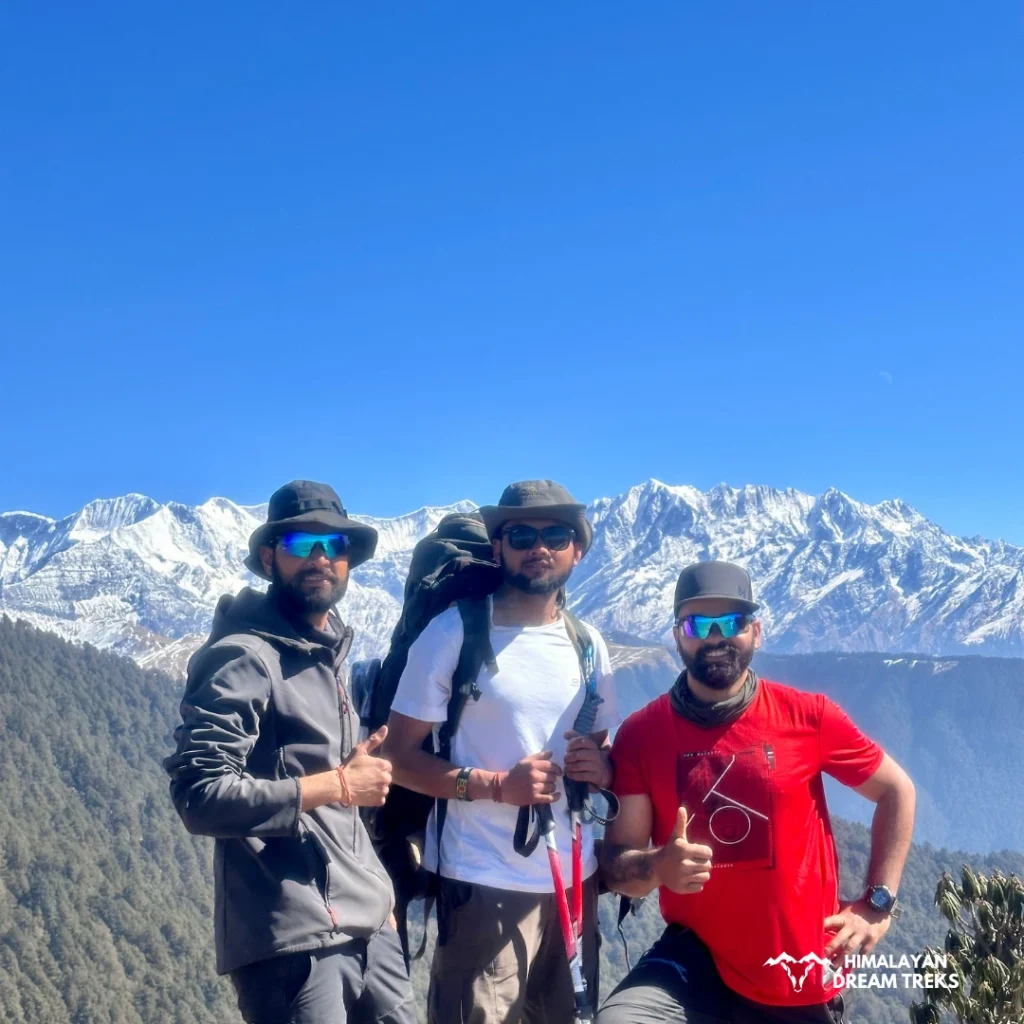





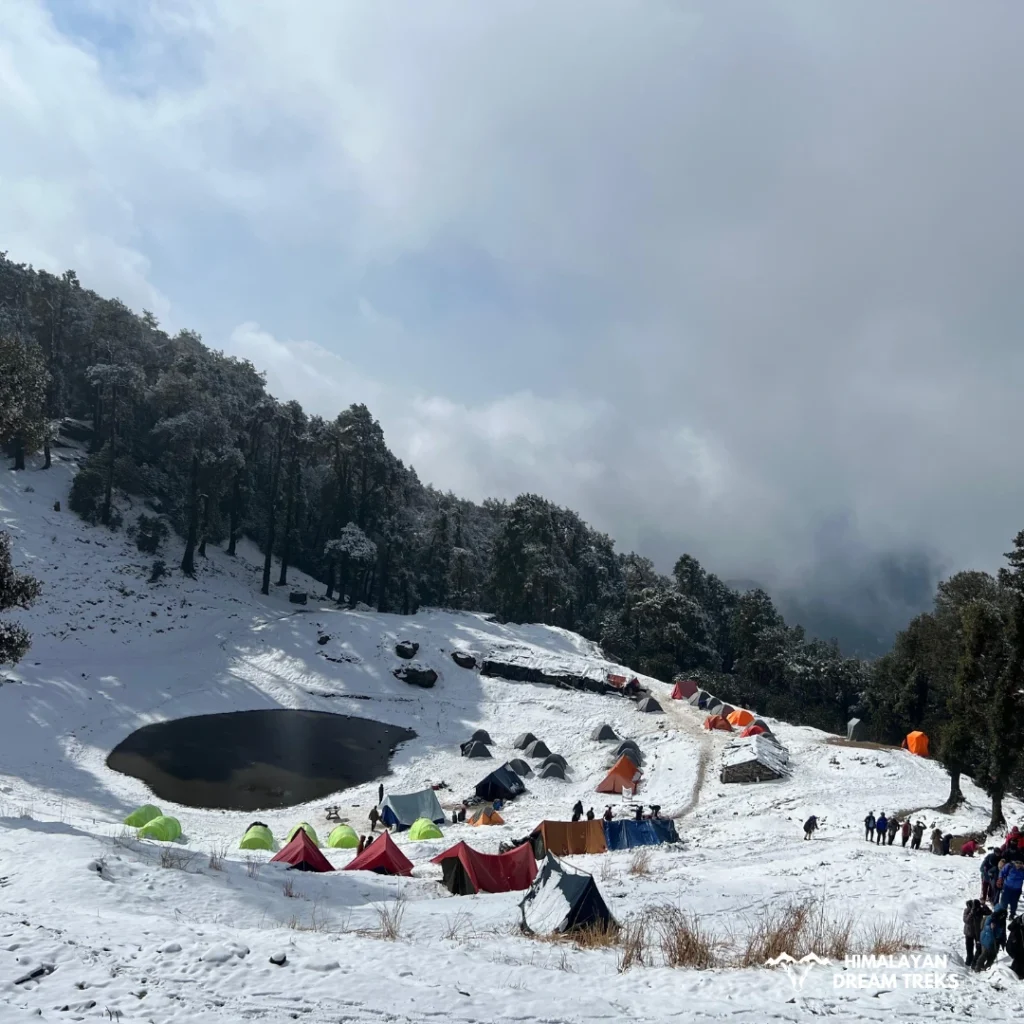

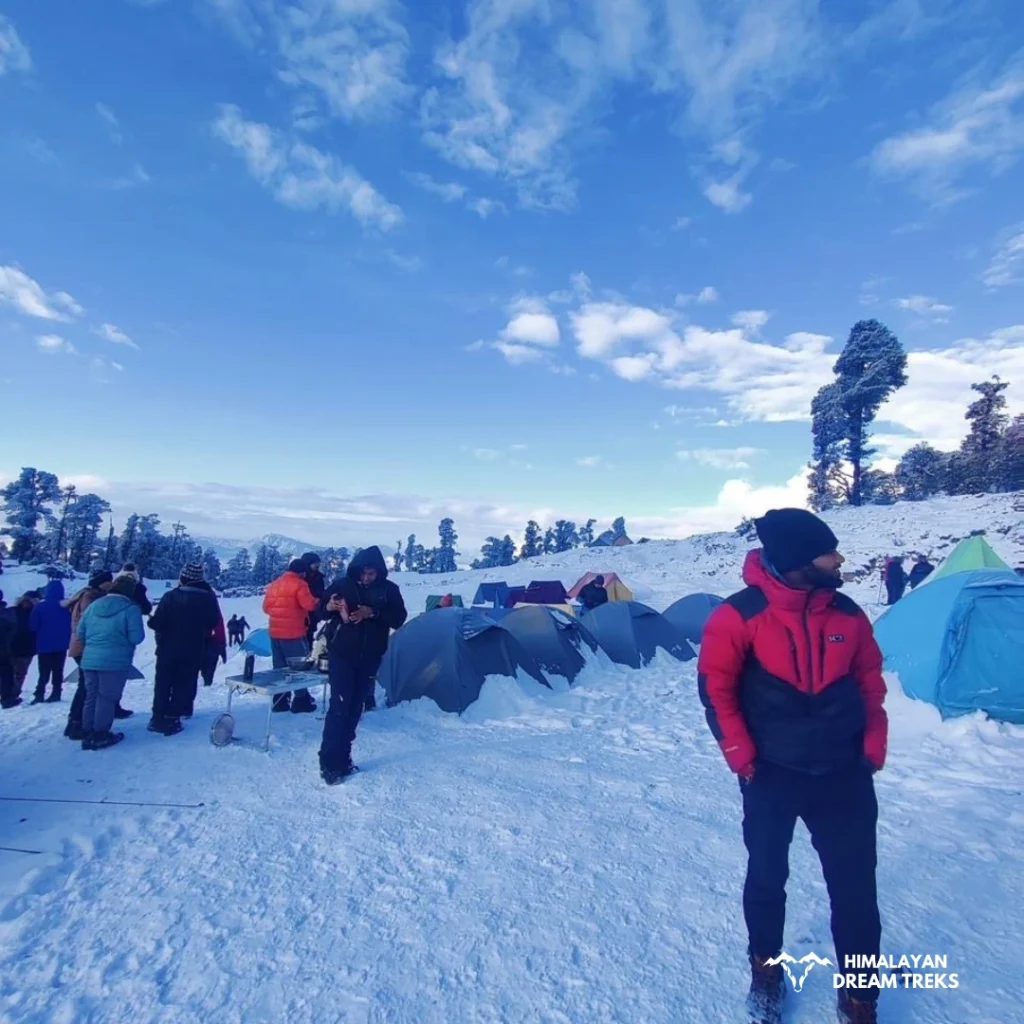

FAQs on Brahmatal Trek
Both Brahmatal and Kedarkantha treks are excellent options for beginners, but they offer slightly different experiences, and your choice may depend on your fitness level, desired views, and preferred trekking style.
- If you’re looking for an easier trek in terms of difficulty, with panoramic views of mountain ranges and endless valleys, Kedarkantha is a great choice over Brahmatal.
- If you prefer a more challenging trekking experience and enjoy serene, scenic frozen lakes along with expansive Himalayan views, then Brahmatal Trek is ideal.
- For a trek with a dramatic summit climb, Kedarkantha is the one to go for.
- If you’re looking for a destination with fewer crowds on the trail, you should opt for the Brahmatal trek over Kedarkantha. Although both destinations can be crowded during peak winter, Brahmatal tends to be less crowded compared to Kedarkantha due to its relatively lower popularity.
It is advised to withdraw cash from Rishikesh itself. You might find other ATMs en route, but they remain mostly cashless and stopping vehicles like this also hampers our timeline.
The trip cost of the Brahmatal Trek varies from INR 6,000 to INR 11,000, depending on the itinerary, group size, services, starting point, and the time of the year, you are planning for trekking.
Being a local tour operator and listed as a certified trekking company, HDT offers the Brahmatal Trek Package (6D/5N) without Transportation at INR 5999/- +5% GST Per Person and with Transportation from Rishikesh to Rishikesh with INR 7,999/- +5% GST Per Person.
With the 6D/5N itinerary, the package is inclusive of essential services like transportation, accommodation, meals, certified guide or trek leader, local sightseeing options, trail permit, and activities. As an on-ground tour operator, we have expertise in making arrangements and handling logistics to provide an unparalleled experience for our guests.
To make your trekking experience as convenient and enjoyable as possible, our travel experts and dedicated support staff are available 24/7 to help you with any queries or issues related to the trek.
The best time to do the Brahmatal Trek for experiencing snowfall is in peak winter from mid-December to January. During this period, it experiences the best snowfall of the season, and the entire trail is covered with a blanket of fresh snow, creating a beautiful winter wonderland in the Uttarakhand Himalayas. At this time, it attracts all the nature and adventure enthusiasts from all over India, making this trek a “must-do” in peak winter.
Snowfall typically begins at the start of December, peaks in January, and lasts until early February. However, unexpected snowfall has occurred in past years; in 2019, it was recorded in mid-October, and in 2022, it started in early February. Therefore, predicting the exact timing of snowfall can be uncertain. If you are planning to experience the best snowfall, it is strongly advisable to get regular updates from current weather forecasts.
The Brahmatal Trek is generally less crowded compared to other popular treks like Kedarkantha, Chopta Chandrashila, Kuari Pass, especially during off-peak times. However, during the peak winter season (December to mid-February), it can still attract a huge number of trekkers, though it remains relatively quieter due to its lower popularity. The lower popularity of Brahmatal proves to be a boon for nature lovers, and after February, you may find yourself walking alone on the snowy trail of Brahmatal, experiencing the calm and peace in the nature of the Himalayas.
The Brahmatal Trek covers a total distance of approximately 24 kilometers for the entire route, starting and ending at the same point at the Lohajung base camp. This 24 km-long trail takes 5–6 days to complete, passing through beautiful dense forests of oak and rhododendron, Telandi Top, Jhandi Top, Gujreni, the frozen Bekaltal Lake (9,875 ft), expansive meadows, snowy landscapes, the high-altitude Brahmatal Lake (11,150 ft), and finally reaching Brahmatal Top (12,250 ft) with the view of Mt Trishul and Nanda Ghunti mountain range. It is a moderately difficult walk, and during the journey, you will gain an elevation of 4,650 ft, starting from Lohajung at an altitude of 7,600 ft (2,317 m) and reaching the maximum altitude of 12,250 ft (3,734 m) at Brahmatal Top.
Yes, the Brahmatal Trek is a safe and enjoyable trek, suitable for beginners. It has well-marked trails and manageable elevation gains. The trek is classified as easy to moderate in terms of difficulty, while passing through forests with a gradual ascent and reaching the maximum altitude of 12,250 ft (3,734 m) with the total trek distance of 24 km. However, arrival at altitudes above 8,000 feet increases the chances of AMS, but proper acclimatization and basic physical fitness are sufficient to prevent this challenge. And, to convert the difficulty of the winter snow into a wonderful experience, proper gear, following beaten paths over the snow-covered trails, and following your guide’s instructions are sufficient.
Brahmatal is one of the most beautiful winter treks in the Himalayas. Its snow-covered trails, dense forests, beautiful frozen lakes, and most rewarding views of Himalayan peaks all make Brahmatal a unique winter trekking destination and famous among adventure and nature enthusiasts. Brahmatal Lake is connected with a mythological story of Hindus, where Lord Brahma meditated for many years in the past. This mythology adds great spiritual significance to the lake. Along with the religious aspect, the lakes of Brahmatal and Bekaltal have unique natural beauty, especially when they get frozen in winter. The trek provides views of some of the most prominent mountain peaks of the Himalayas, including Mt. Trishul, Nanda Ghunti, and Maiktoli, as well as other visible peaks such as Chaukhamba, Nilkanth, Kamet, Hathi-Ghoda, etc. Also, the famous and mysterious Roopkund Lake and the vast meadows of Ali Bedni Bugyal can be seen from the trail of Brahmatal.
Trek Reviews
I recently went on the Brahmatal trek with Himalayan Dream Treks, and it was an unforgettable adventure. The stunning landscapes and the team’s seamless organization made every moment exceptional. Our trek leader guided us expertly through the terrains and even arranged a surprise marriage ceremony at Triyuginarayan, adding a heartfelt touch. Himalayan Dream Treks impressed us with their professionalism, well-crafted itinerary, and quality equipment. Their knowledgeable and friendly staff ensured our safety and enjoyment throughout. For anyone looking for more than just a trek—Himalayan Dream Treks delivers a truly memorable journey. Thank you for a magical experience!

Santu Tripura
One of the best experiences, when it’s about the mountain trek “Himalayan dream treks” is the name it has to be. Amazing hospitality and perfect discipline
Mr. Soby Negi was always there for any support and guidance.
Had deap knowledge about the trek as an experienced veteran. Kept updating us about the floura and fauna and the peaks those were visible during the trek and way beyond.
Would definitely recommend this agency to be trusted.. All the best, guys, and keep the good work on. Cheers.

Nitin Mehta
Similar Treks
On Demand
/ Per Person
Available Dates
| Group Dates | Status |
| 4 Nov 2024 | Booking Open |
| 5 Nov 2024 | Booking Open |
| 8 Nov 2024 | Closing |
| 10 Nov 2024 | Booking Open |
| 15 Nov 2024 | Booking Open |
| 16 Nov 2024 | Booking Open |
| 18 Nov 2024 | Booking Open |
| 23 Nov 2024 | Booking Open |
| 29 Nov 2024 | Booking Open |
Talk with our experts: +91 80896 93825 / +91 94565 46051
| Group Dates | Status |
| 7 Dec 2024 | Booking Open |
| 10 Dec 2024 | Booking Open |
| 14 Dec 2024 | Booking Open |
| 18 Dec 2024 | Booking Open |
| 20 Dec 2024 | Booking Open |
| 21 Dec 2024 | Booking Open |
| 22 Dec 2024 | Booking Open |
| 23 Dec 2024 | Booking Open |
| 24 Dec 2024 | Booking Open |
| 25 Dec 2024 | Booking Open |
| 28 Dec 2024 | Booking Open |
| 30 Dec 2024 | Booking Open |
Talk with our experts: +91 80896 93825 / +91 94565 46051
| Group Dates | Status |
| 4 Jan 2025 | Booking Open |
| 8 Jan 2025 | Booking Open |
| 11 Jan 2025 | Booking Open |
| 12 Jan 2025 | Booking Open |
| 18 Jan 2025 | Booking Open |
| 22 Jan 2025 | Booking Open |
| 25 Jan 2025 | Booking Open |
| 31 Jan 2025 | Booking Open |
Talk with our experts: +91 80896 93825 / +91 94565 46051

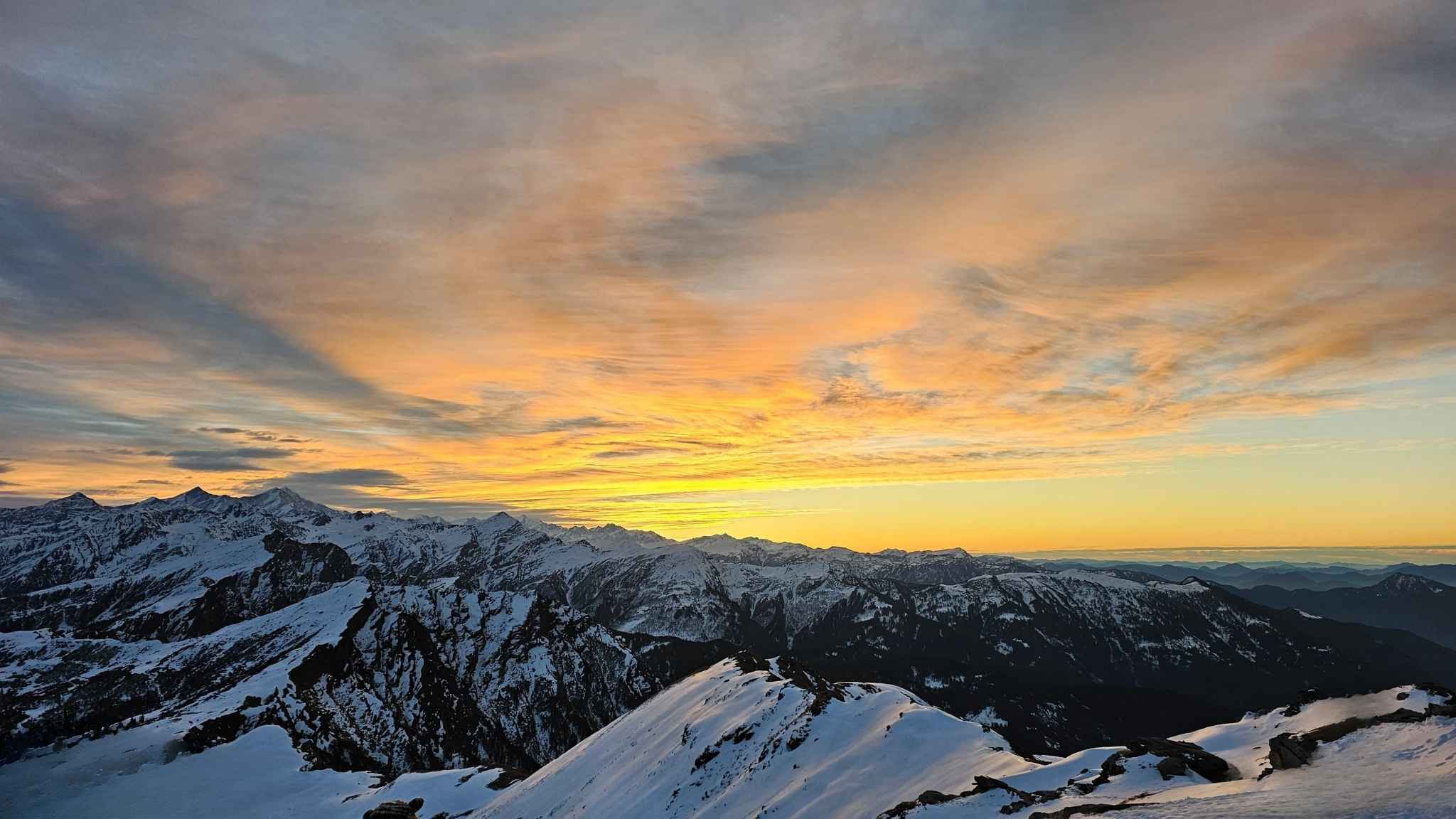
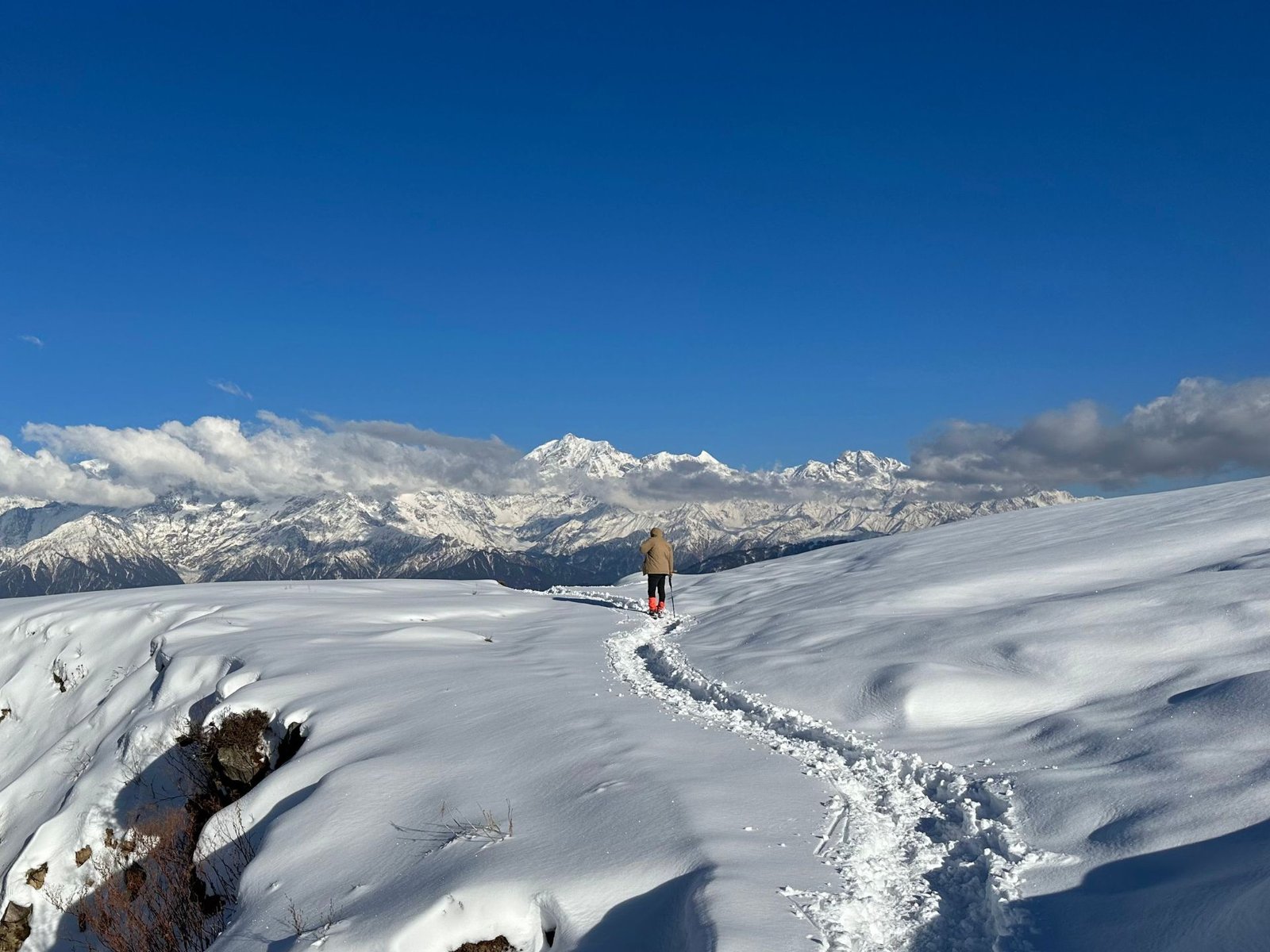
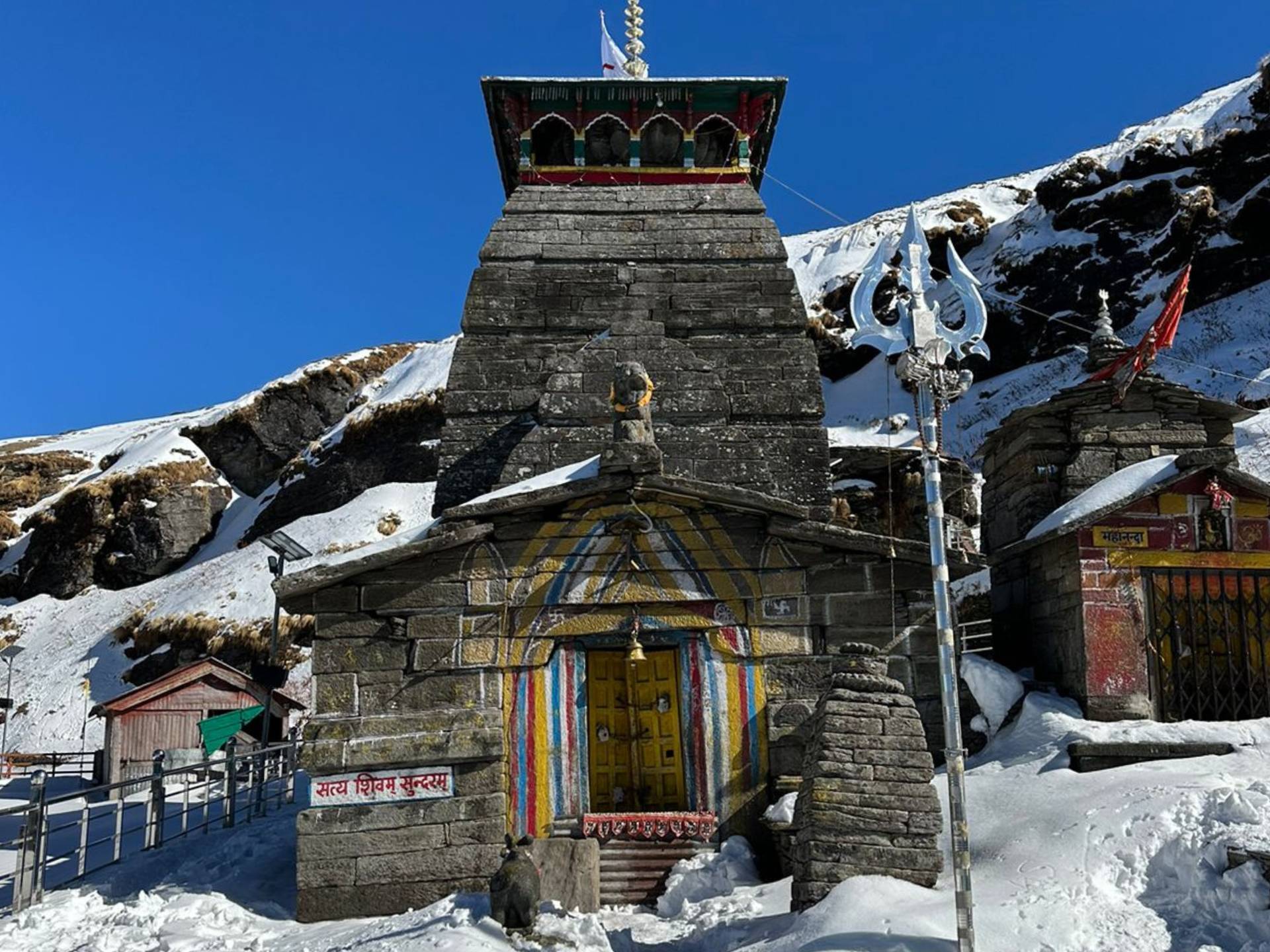


Leave a Comment